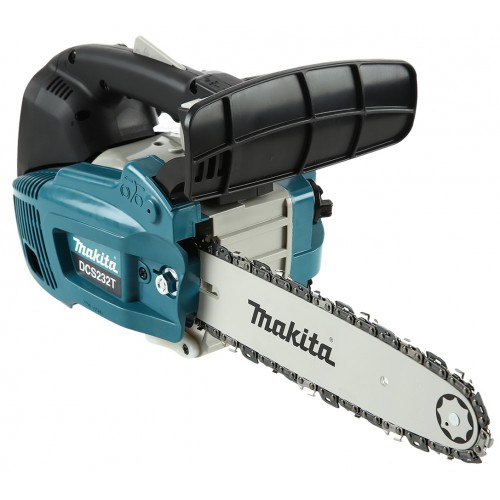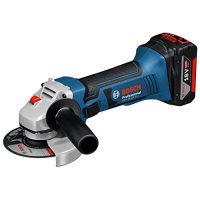
Hand saw: which hand saw is suitable for the garden?
Content
Processing wood for heating, caring for trees and shrubs, or do-it-yourself work in a home workshop for wood and metal - a good hacksaw, also known as a chainsaw, is suitable in every case. Which one to choose to enjoy efficient and least tiring work? We advise!
Types of hand saws - which one to choose?
Contrary to appearances, classic hand saws have many advantages - they do not need a constant connection to electricity or battery charging. And although they certainly require more patience and effort from a power tool, they guarantee more freedom - you will not be limited by the length of the cable or a discharging battery. They can be divided by purpose (by the type of material for which the cutouts will work) or by the type of construction. We present both categories to make it as easy as possible for you to choose and match a chainsaw to suit your needs.
Types of hand saws: purpose
Hand saw for metal – if you know that in your home workshop you will primarily cut metal, for example when preparing shelves for a greenhouse or garden worktop with your own hands, then pay special attention to frame models with an interchangeable saw blade and frame models with an adjustable angle saw blade tilt. In the first case, it is possible to replace the blade when it is dull or damaged, but its location in the saw is fixed and motionless. In turn, with an adjustable saw blade, you get the ability to set it at different angles, thereby adjusting it to the location of the surface being cut, which will be especially useful in case of hard-to-reach places.
In both cases, the hacksaw is distinguished by very small teeth on the saw blade, its characteristic shape (D-shaped) and a narrow blade. An example of such a tool is the TOPEX frame saw from Top Tools.
Hand saw for wood - Distinguish between flakes and hole saws. Saws of the first type are tools in the shape of an equilateral triangle, with a D-shaped handle located on the shortest side. They are characterized by very fine teeth on the saw blade. Some models can be equipped with a scale on the side opposite to the cutting one - you can find it, for example, in the Top Tools offer. They are mainly used for slitting wood.
Crowns, in turn, are designed, as their name suggests, to cut holes in wood. The shape of the saw is the same as the blade, except that the blade is very narrow; especially at the tip. Visually, it can resemble a very large pointed knife. As in the case of the payer, you can find a model with a scale (for example, the Yato 3133 brand).
Universal Hand Saw – Suitable for cutting various materials. An exemplary model can be found in the Irwin (EVO) brand offer; he is confusingly similar to a payer, but has much finer teeth. For various surfaces, you will also use a closed U-shaped hair saw with a very wide belly and a blade so narrow that it visually resembles hair or thread.
Types of hand saws: construction
Horizontal saw - with a slightly curved shape, a relatively long blade and two handles located on its two opposite sides. Requires two people (one pulls, one pushes); this design makes it much easier to cut very thick pieces of wood by using double force. It works especially well when felling trees with bulky trunks. An exemplary model can be found in the GLOB brand offer.
Bow saws – D-shaped, with a very large number of closely spaced teeth on an extremely narrow blade. These include the previously mentioned frame saws.
Ridge caps - visually resembling a meat cleaver; with a wide, often perfectly rectangular blade with very small, almost imperceptible teeth. This is the best wood hand saw in terms of precise cutting, trimming sides and corners; The teeth are tilted forward so they cut when moving in one direction and remove chips when moving in the other direction. This allows for a much more precise cut; small pieces of wood won't cover it. They also apply to hand-held angle saws; differs in a certain angle of inclination of the teeth of the blade.
What should I pay attention to when buying a saw?
In addition to determining the type of saw you need most, remember to check a few parameters. Primarily:
TPI coefficient - determines the number of blade teeth in a particular section of the blade; usually one inch. The higher the ratio, the more precise and aesthetic work you can expect; the wood will be cut millimeter by millimeter rather than being torn at long intervals. But the already mentioned YATO 3130 spine with TPI 12 provides a really accurate cut.
Use of PTFE (Teflon) coating on the blade - A Teflon-coated blade will be more resistant to corrosion, wood chips will not stick to it, and cutting resistance will be greatly reduced.
Material done – Hardened steel deserves special attention, as it is extremely resistant to damage and has a high degree of hardness.
Handle type – choose a handle with an anti-slip coating that will provide a secure grip and greatly reduce the risk of pinching your fingers. It is worth trying out the SoftGrip solution (soft handle) used in Fiskars hand saws, which not only ensures a firm grip of the tool in the hand, but also protects against painful blisters.
The choice of hand saws is really great; Of course, it is worth doing at least a few of them. The more choices you have, the more efficient you can expect! These are tools that cost from a few to several tens of zlotys, making it easier to collect the entire set. Finish your home workshop and start DIY!
More guides can be found on AvtoTachki Passions in the Home and Garden section.
:

